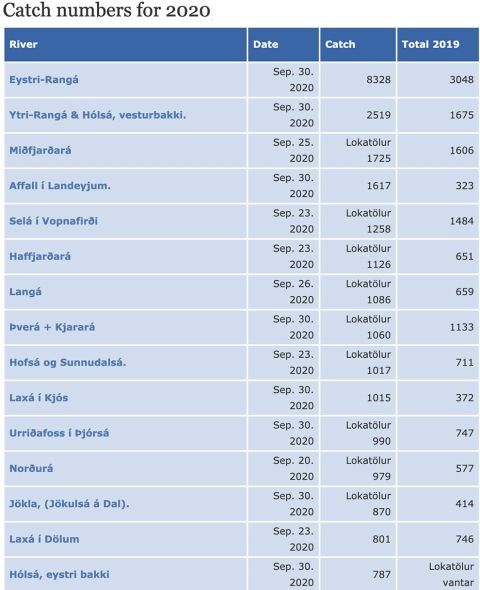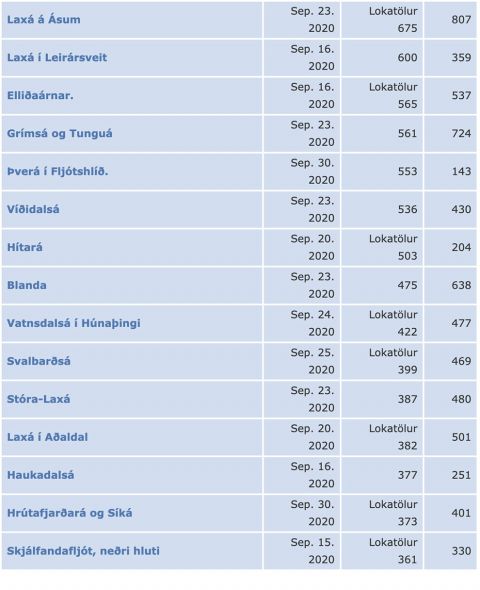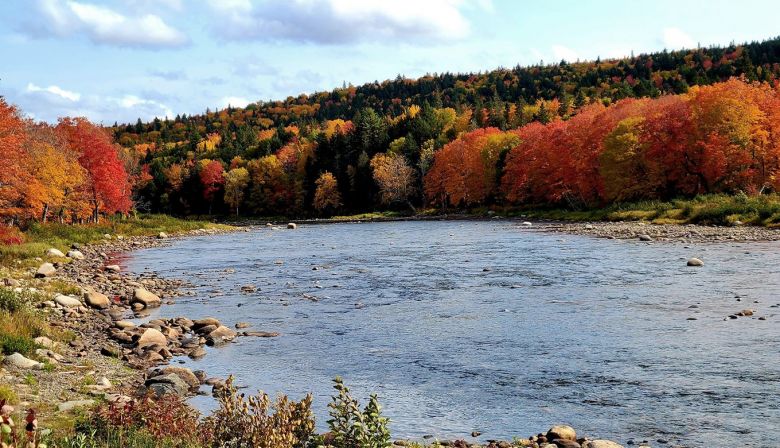
Subscribe & stay up-to-date with ASF

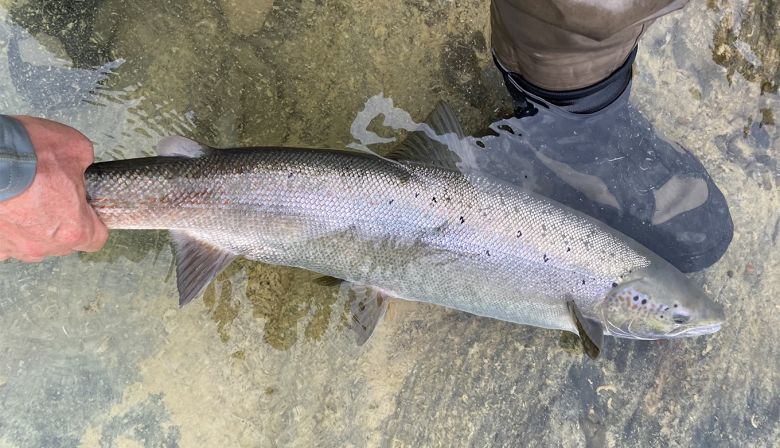
This week’s Rivernotes reflects this, with more of a photographic coverage, and with a few comments as well regarding the Atlantic salmon on the European side of the North Atlantic Ocean.
As October rolls in, it is still too early to give definitive observations on the state of the runs for the year and the outlook for next. But we will try by next week to give some “starter notes” in that direction.
At the moment, a great deal of rain would be helpful, but there are certainly considerable numbers of salmon around, in a wide array of rivers, which is most encouraging.
A week ago Christopher Minkoff of Montreal visited some of the Gaspé rivers, particularly the Grande Rivière.
Minkoff’s observations included:
The extra sets of eyes that anglers provide help to reduce poaching, and to alert concerned locals of irregular activities on the river.
But the river remains, and undoubtedly will be as enticing in 2021 as any other recent year.
In a phone conversation, Christopher Minkoff said he considered himself fortunate to be out on the rivers. The day following his return to Montreal, the city was placed under covid related restrictions.
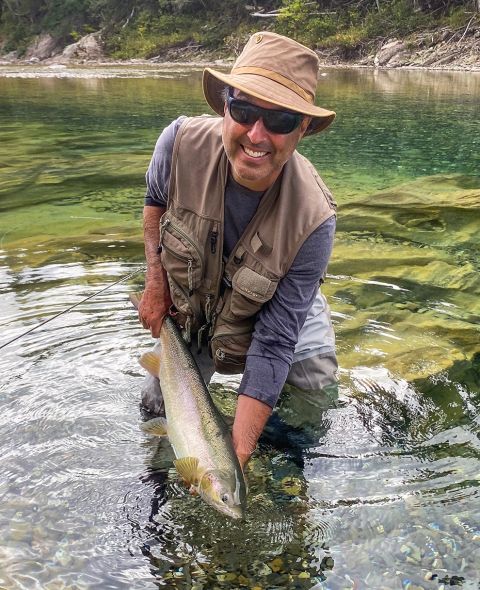
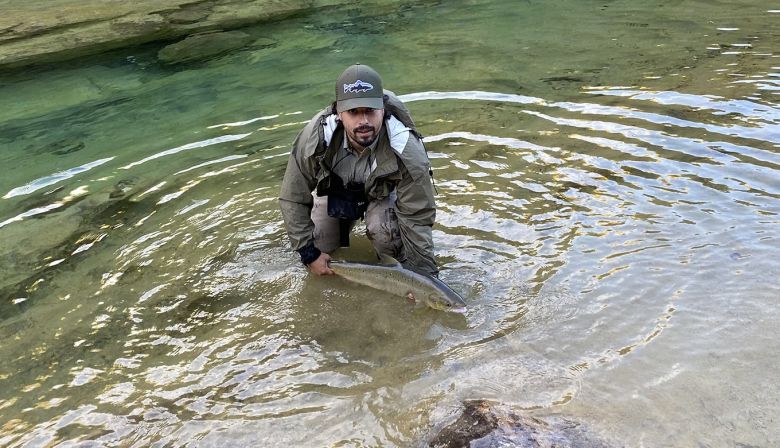
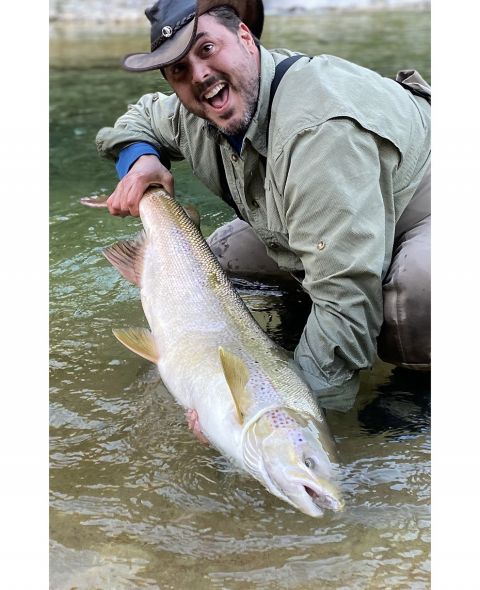
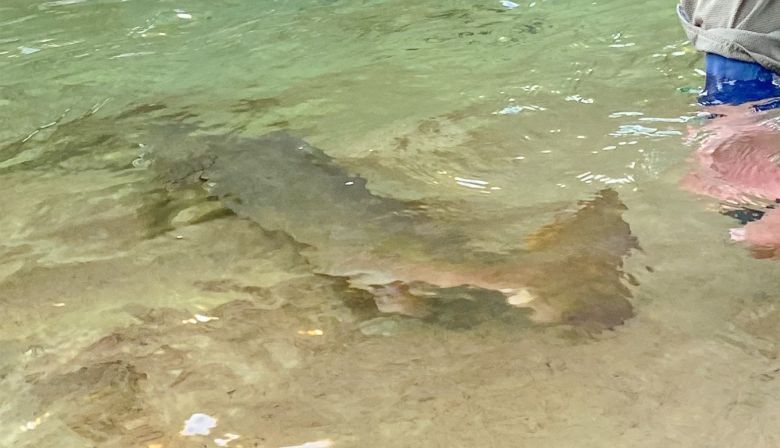

I have been fishing lower down in the rivers in the mornings hoping to see some kind of run com in. So far it’s not looking good and I have been seeing just the odd salmon.
We’ve had a minor heat wave the last three days and water temperatures have gone from 10-15C to 18-23C. There is some rain forecast in the headwaters of the Little Southwest Miramichi this week, so hopefully we will get enough to make a difference and increase flows and water levels.
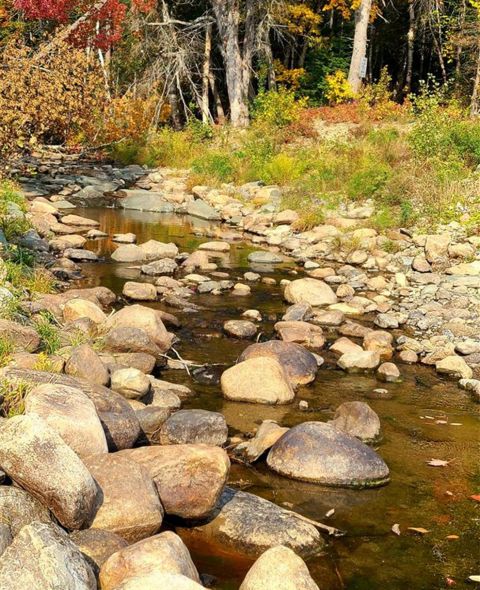
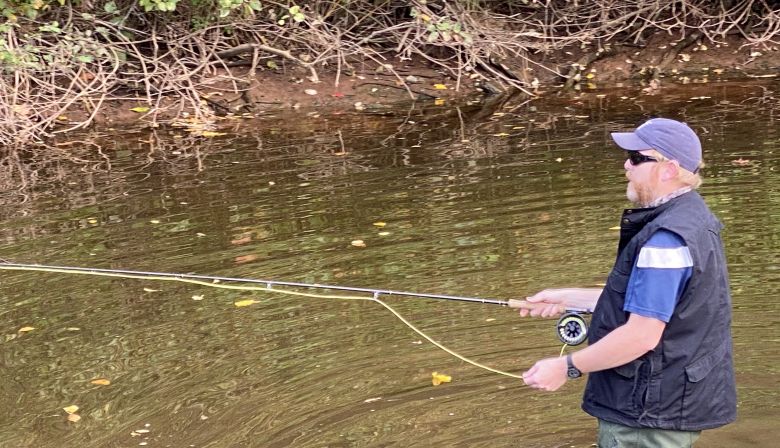
Kris Hunter, ASF Director of Programs in Nova Scotia and Prince Edward Island, says:
There were many decent size trout jumping all around my salmon fly but I had no takers.
PEI is now into its extended fishing season (Sept 16-Oct 31) so only a select number of rivers are open to Atlantic salmon or trout fishing. The Mill River is salmon fishing only. As Hurricane Teddy didn’t drop a significant amount of rain on this part of the Island, water levels are still not quite up enough yet to draw in fresh salmon.
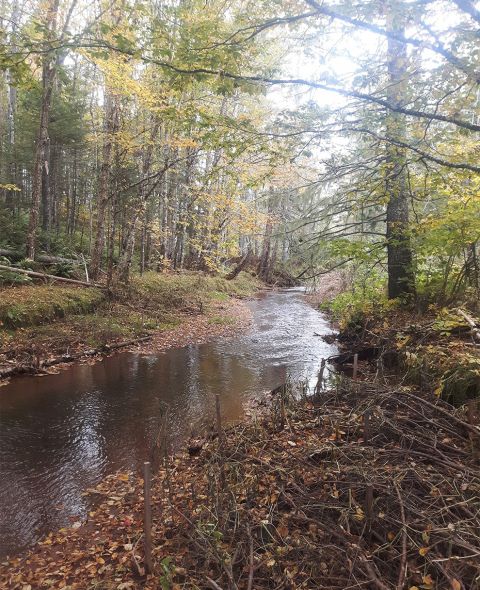
Despite a small, short-lived increase in water levels after Hurricane Teddy last week, all our streams and rivers are back near base flow levels. I haven’t been hearing of, or seeing, any Atlantic salmon around yet, which is not uncommon for this early into the fall.
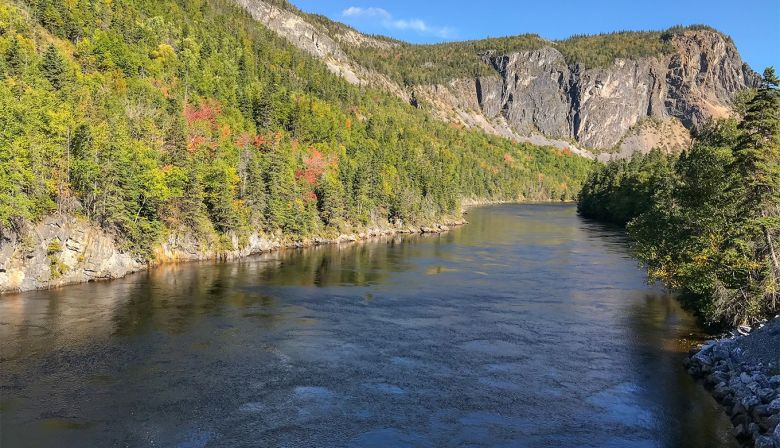
Don Ivany, ASF Director of Programs for Newfoundland and Labrador, says:
Currently all rivers in the province are closed for the season with the exception of the lower main stems of the Humber River, Exploits River, and Gander River. The group of rivers is better known as ‘The Big Three’.
All three of these rivers remain open for the fall fishery until Oct 7 when the season officially closes.
Heavy rain during the past week and a half caused water levels to rise sharply on both the Humber and Gander Rivers. In fact, well known angler Dave Vardy reports that the water level on the Gander River is now so high (running at approx. 100 cubic meters per sec) that angling has all but ceased.
Similarly, angling activity has slowed considerable on the lower Humber because of high water.
Despite the difficult conditions, a couple of die-hard anglers can still be seen on the water every other day, but they are basically restricted to boat fishing only.
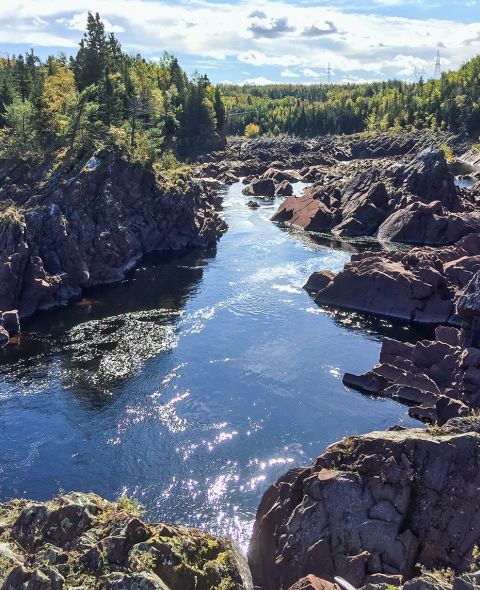
Kim Thompson of the Exploits River Environmental Resources Management Association reports that unlike the rest of the province they have not received nearly as much rain in the Grand Falls area. As a result, the Exploits River is currently running at medium level. Dave Vardy reports that angling activity on the Exploits River has slowed down now that we are approaching the end of the season.
According to the provincial government’s ‘water resources website’ most other rivers throughout the province have been running high for the past week or so. If there is a silver lining in this it is that all this high water should enable fish on many of these rivers to reach their spawning grounds in time for the spawning ritual which is about to begin. Hopefully, this will result in a few more fish coming back to these rivers in four or five years time.
Kim Thompson also reports that ERMA closed all their counting facilities on the Exploits as of Sept 18th. By now most other counting facilities throughout the province have now been closed for the season as well. The lastest fishway counts, up to Sept 20, have now been posted by DFO on their web-site.
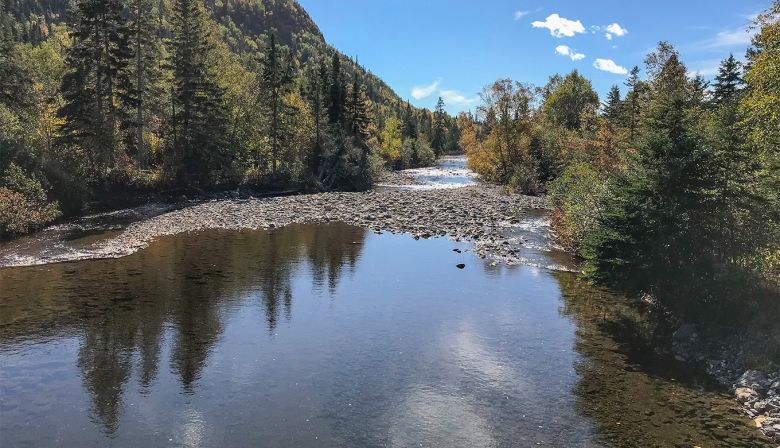
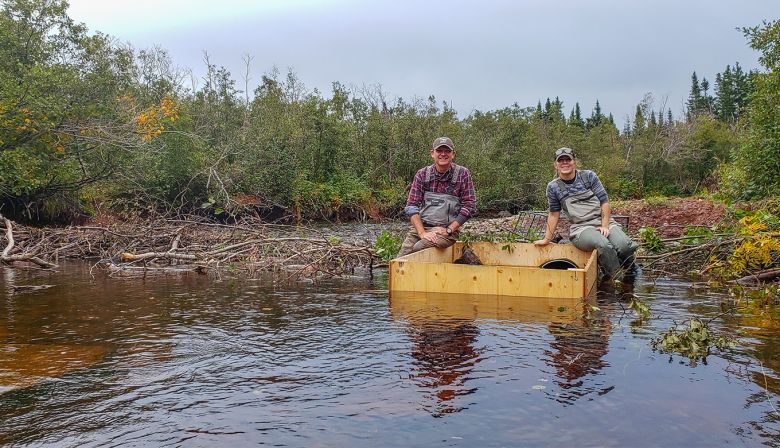
In recent years the price of beaver pelts have dropped substantially in North America and few people are trapping beavers.
As a result beavers and beaver dams are becoming more and more numerous on many of our smaller streams throughout Atlantic Canada and Quebec.
Such dams often impede fish passage, and up until now the preferred action has been to remove the beavers and tear out the beaver dams.
However, beaver dams play a very important role ecologically on our river systems and the dams benefit fish and other wildlife species.
The dams allow nutrient enrichment of streams, create new channels and new habitat for juvenile fish and waterfowl, and creating important riparian zones along our streams.
Most recently, the concept has emerged of finding a solution to the issue of fish passage around these dams instead of removing them.
ASF’s Director in NL, Don Ivany, recently agreed to partner with Victoria Neville of the World Wildlife Fund (WWF) to field test a new fish passage device that can be installed in beaver dams.
Referred to as a ‘Beaver Baffler’, the device was designed by the Beaver Institute in the USA. However, to install the device Don and Victoria needed a few extra hands to help out so they approached SPAWN President John McCarthy who was eager to get involved. They also recruited Dan Gillard, a local trapper in Western Newfoundland who has a wealth of knowledge about beavers and their habits.
Chelsea Boaler, who also works with WWF, rounded out the team.
Earlier this week the crew travelled to the upper Humber River to install the device in a beaver dam.
This dam was located on Deadwater Brook, which is a major spawning tributary located on the Upper Humber River. A number of adult salmon were being held up just below the beaver dam – trying to get upstream to their spawning grounds.
The installation of the device went fairly smoothly considering it was the first one the crew ever installed. Beaver Bafflers such as this one have been used successfully on streams in other areas in the past, including in the U.S. Pacific Northwest region.
For now, this is a pilot project and the device will be monitored closely to see how things work out.
If it is successful, more ‘beaver bafflers will be installed at dams throughout the province in the future. So stay tuned!
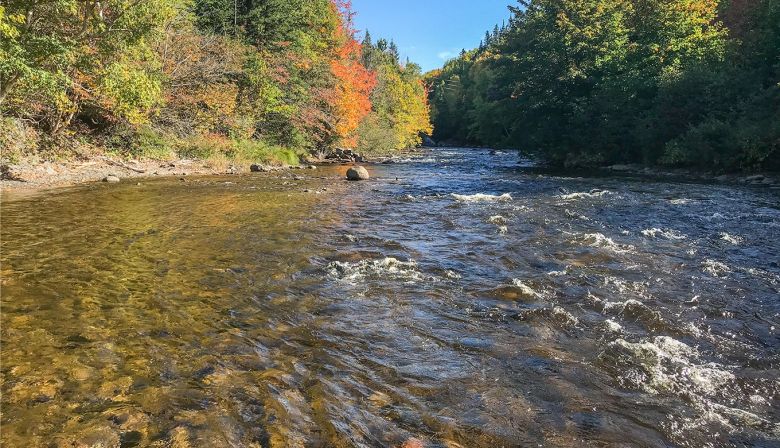
We finally received more than a passing shower, but it hasn’t been reflected in the water discharge flows in Sidney, ME yet. According to the USGS gauge, the flow is now reading 2,330 cfs, which is between minimum and lowest 25 percentile flows for this date over the last 34 years’ worth of data. We will hopefully see an uptick in flows shortly. The temperature at Lockwood this past week has been 17-17.5 degrees Celsius. One female salmon was caught at Lockwood yesterday and was moved to the Sandy River.
As for the Sebasticook: very few fish are moving upstream. Juvenile alosids (group that includes shad, blueback herring and alewives) are moving downstream. Flows are up but still logging medians by quite a bit (per Nate Gray, DMR).
One new Atlantic salmon caught at Lockwood on 29 September.
Lockwood fish lift (mainstem Kennebec) total catches for 2020:
River herring: 143,259
American shad: 180
Sea Lamprey: 45
Atlantic Salmon: 51
One additional salmon was moved to the Sandy River after capturing it in the ledges at Lockwood during fish stranding removal at the flash board replacement on Wed., 22 July, 2020.
Accumulated Atlantic salmon catches are at the third highest for this date in the last 10 years.
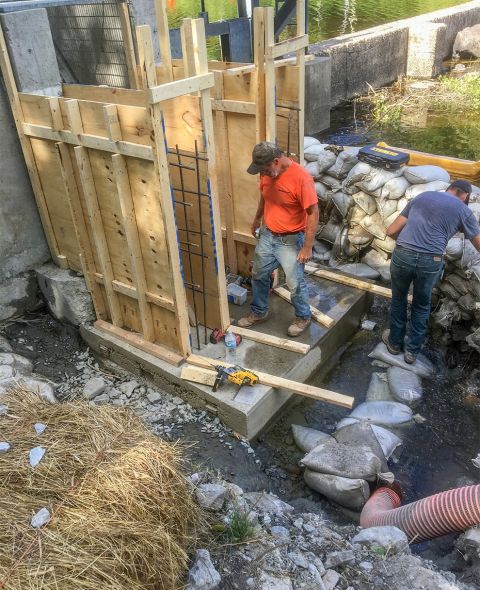
Andy Goode of ASF says:
Rebuilding entrance to Pushaw Fishway
ASF built the Pushaw Lake Fishway in the Penobscot in 2011. It now passes a million alewives into this 5,400 acre lake making it the biggest run of alewives up any tributary stream on the East Coast. With the dry springs the past several years, ASF worked with the US Fish and Wildlife Service, Maine Department of Marine Resources, and the lake association to lower the entrance section of the fishway by 18 inches to make sure there would be sufficient water throughout the migratory season. Funding provided by US Fish and the contractor was Thornton Construction in Milford, ME
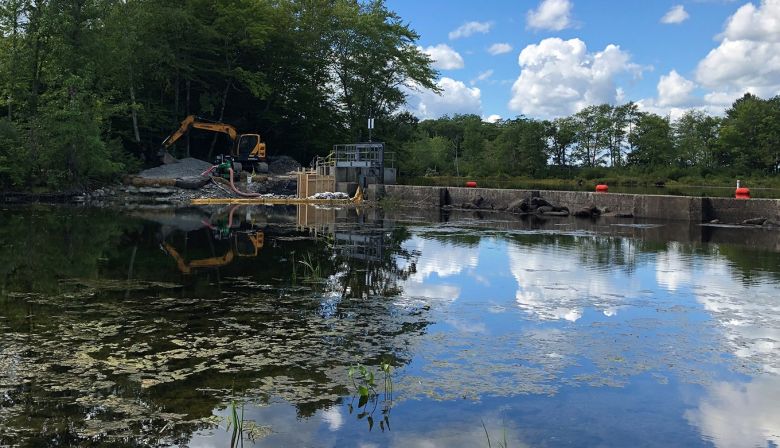
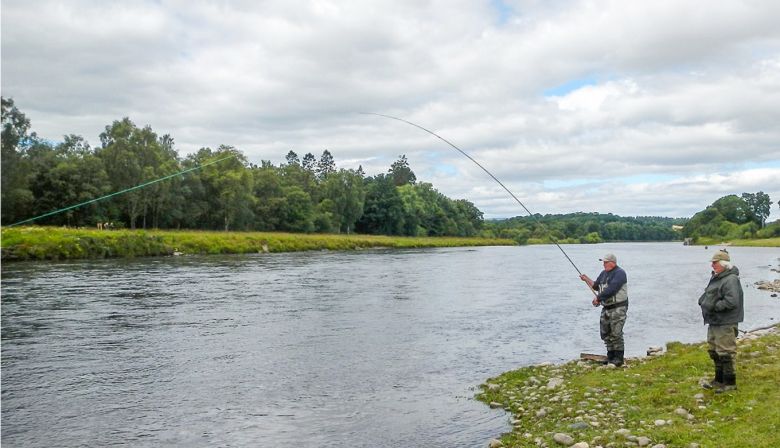
Our salmon season starts on some rivers in January, quite early in comparison to most countries.
During the peak spring fishing time from March 23 until May 29 we were in “lockdown” due to Covid-19 restrictions. When the rivers opened again travel distances for anglers were limited to five miles for a time which restricted fishing but those who could reach a river were often rewarded by good sport, in some cases exceptionally good sport as the fish had not been disturbed and took well.
After the initial bonanza, rivers quietened down to something more like normal catches.
Then in July grilse started to appear in numbers – better numbers than for several years.
On the whole they were healthier, with fewer of the skinny, emaciated creatures that featured in past years and possibly with a slight improvement in the weights. This year’s grilse run was significantly better than the previous five years at least, and this was reflected in catches reported from many rivers,
Additionally, the runs of grilse continued into August but indications are that the number of fresh grilse entering rivers in September has slowed down.
There are still a few decent two sea winter salmon entering freshwater and most of these fish are now between 14 and 20 lbs.
We have had the first frosts of Autumn which will start to affect the salmon behaviour towards spawning and probably make the coloured fish more aggressive and eager to take a fly.
Fishing on many rivers continues until mid-October, and some until the end of October and a few including the Tweed until Nov. 30, so the season here is not over yet.
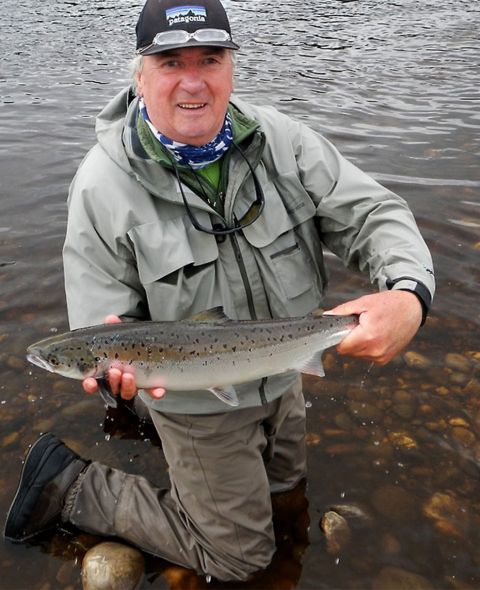
There is no such thing as an average Icelandic salmon river. In some the salmon only swim a few kilometres up from the sea, while in others they swim across long distances of mountainous landscapes or of grass-covered plains. One might be having a year of exceptional salmon returns while another does not.
In 2020, overall, the numbers were good, but certainly not exceptional. Many did better than 2019, but not all.
The Svalbarðsá River is an interesting case. To Sept. 30 there have been 399 Atlantic salmon caught. This is down from 469 in 2019. But then again, the 2020 number is the second highest since 2000, only outshone by that 2019 year.
On average, about 40 per cent of the salmon in this river are multi-seawinter fish.
Icelandic Rivers
The following are the top returns for this island that is astride the mid-Atlantic Ridge.
Note that “Lokatölur means “Final Number”
